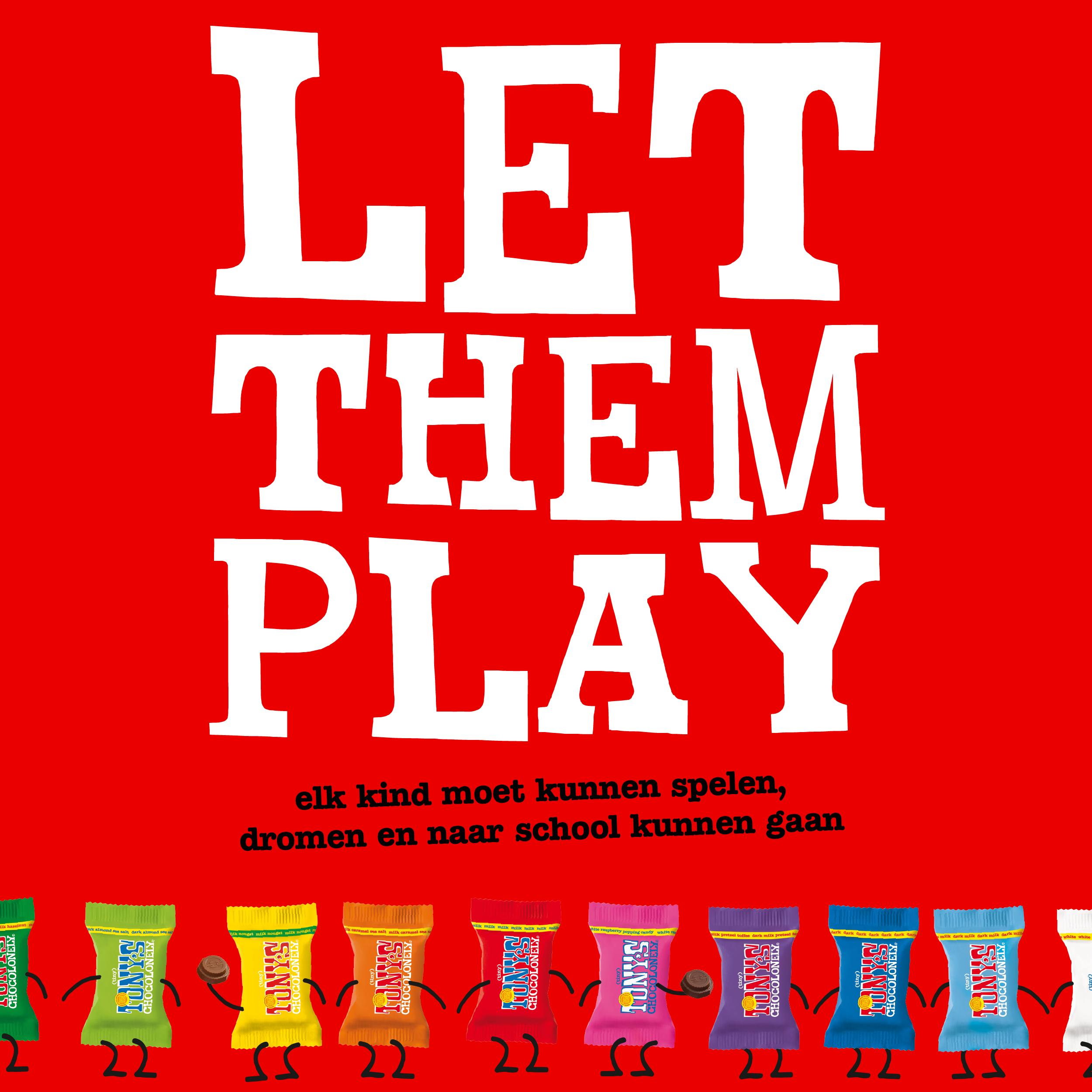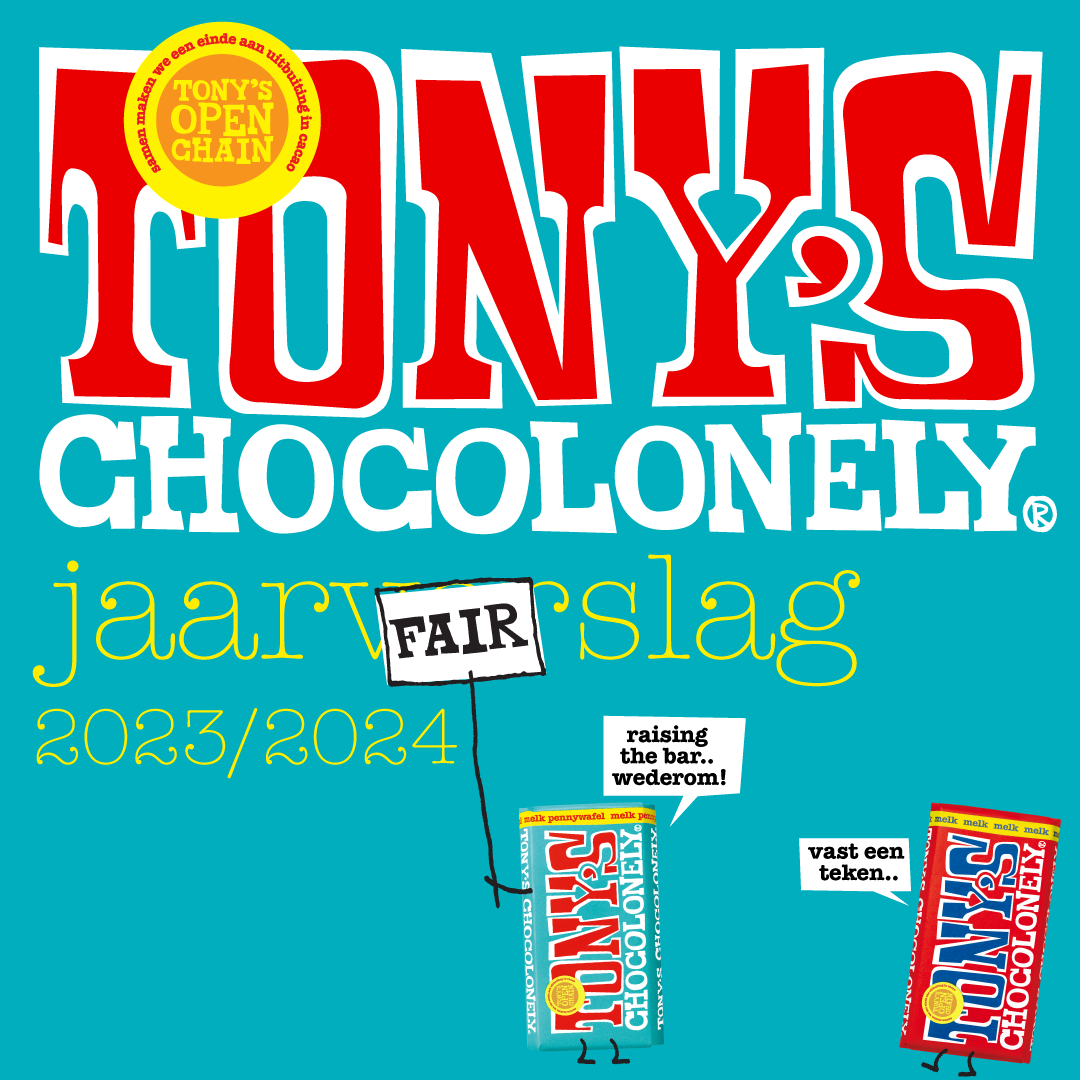Fairtrade is increasing their premium and minimum price!
Fairtrade today announced that it would raise its minimum export price for cocoa from $ 2000 to $ 2400 per tonne (1000 kg). That is the minimum price that must be paid on the international market for Fair Trade cocoa. Fairtrade also increases the premium from $ 200 to $ 240 per tonne. The increases will apply from 1 October 2019: the start of the new cocoa season. With this, Fairtrade is taking a first step on the road to a viable income and that makes us happy!

Tony’s Chocolonely has been calculating and paying a higher price for cocoa since 2013, which enables farmers to earn a living income. That price is higher than the minimum price and the Fair Trade premium added together. But in order for all farmers to earn a living income, it is very important that the entire industry takes its responsibility and ensures that cocoa farmers can earn a living income. In addition to Fair Trade, more and more organizations are coming up with figures and models regarding living income and we are very happy that this is finally on the agenda of companies, NGOs and politicians.The higher minimum export price is also not enough
Due to transport costs and taxes, a cocoa farmer receives an average of $ 800 per tonne less than the (international) export price. So with the higher minimum price and Fairtrade premium, every farmer in the world who sells Fairtrade cocoa will receive at least $ 1840 per tonne of cocoa. That is still far from the price that their own research requires for a viable income ($ 2300 per tonne in Ghana and $ 2668 per tonne in Ivory Coast). There must therefore be a little more on top ..
And what about Tony’s Chocolonely? Before the start of each cocoa season (October 1), we calculate our Tony’s premium based on the best available resources, the cost of living and the cost of cocoa production. We then place these next to the new farm gate prices (which are set annually by the Ghanaian and Ivorian authorities). We bridge the gap between this income and expenditure with our Tony’s premium. We set this premium at the start of the cocoa season in the contracts with the farmers. This way everyone knows where he or she stands during the coming year! Do you also want to know exactly? Then look at the explanation in our recipe for slave-free chocolate.So.. what's the difference? Fairtrade relies on recent research into the living income of ISEAL. A good basis, but unfortunately this was not available when we had to determine our Tony’s premium. We were therefore unable to include the figures from this study.
Another difference is that Fairtrade's calculation assumes that a cocoa farmer only has income from cocoa. But we know from our partner cooperatives and from KIT research, for example, that a household has more sources of income and that food is grown alongside cocoa. Tony’s therefore calculates with 75% cocoa income. And we also use slightly different figures for family size and size of the farm. We currently pay cocoa farmers $ 2030 per tonne in Ghana and $ 1848 per tonne in Ivory Coast. If you add that 75% to the calculation of Fair Trade, we are close to each other. In any case, we are already paying more than the new minimum price and Fair Trade premium added together.
Confusing those different numbers..
It is super nice that Fairtrade and other institutions and companies pay more attention to a livable income, but it is also confusing. Because there are currently too many different methods and calculations in circulation. Our goal is therefore, together with Fairtrade and other partners, to come up with 1 internationally recognized calculation and corresponding figures for the next cocoa season (October 2019). The difference in the figures above shows how important it is to have reliable data, and that is why we push all parties in the industry to share data and arrive at the best possible calculation together. To date, many chocolate giants keep their prices and knowledge secret, while so much knowledge is needed. Let's make the chain open and transparent!
For this season we stick to the agreed Tony’s premium. Prior to the cocoa season, we will always use the latest and most reliable data available. We share our approach and continue to coordinate calculations with multiple partners in order to make the entire cocoa chain transparent. Complicated? Yes. Can it be better? Always. But that cannot be a reason for doing nothing. Only together can we make chocolate 100% slave free and that includes a living income. Let's raise the bar!




